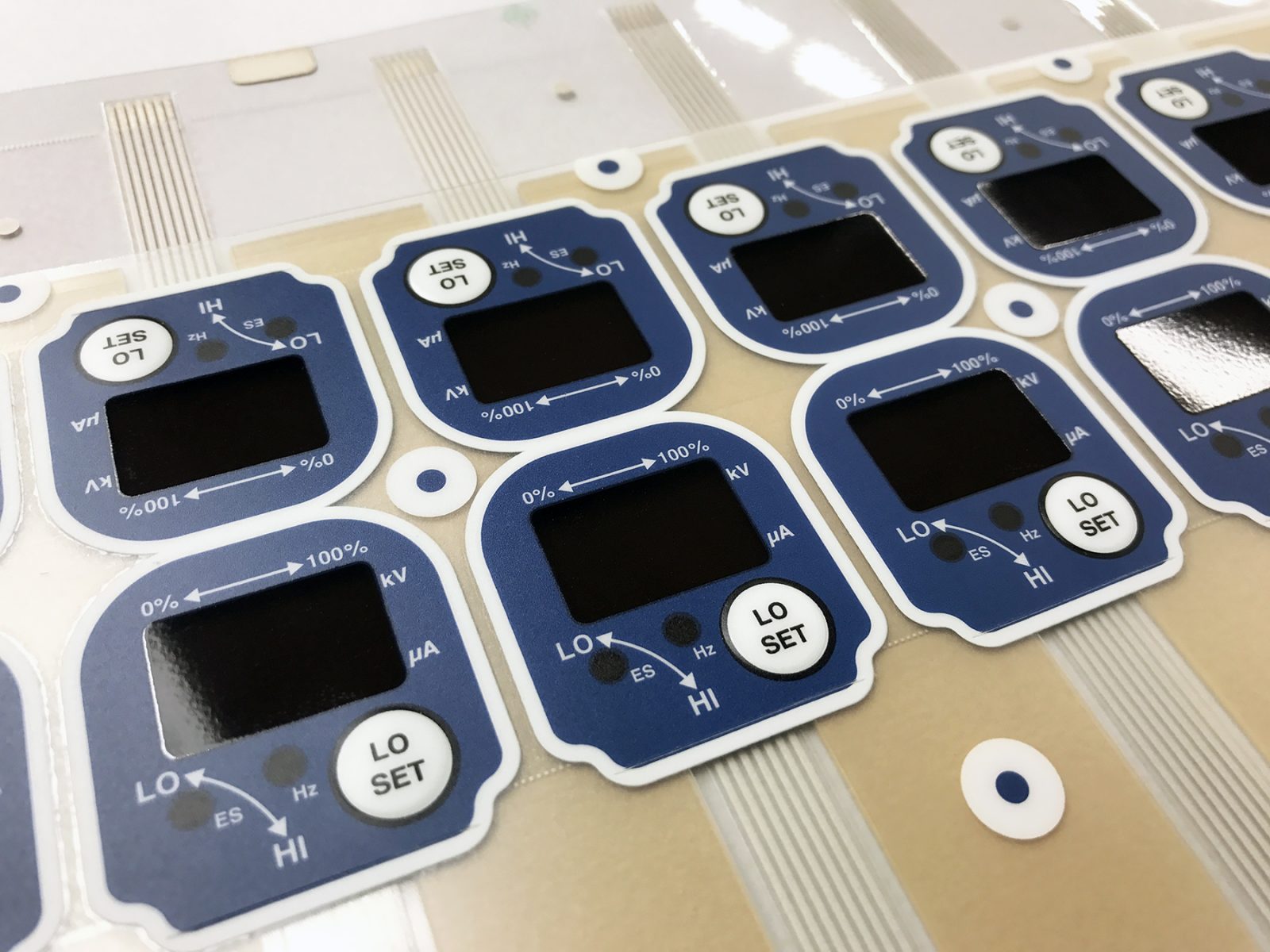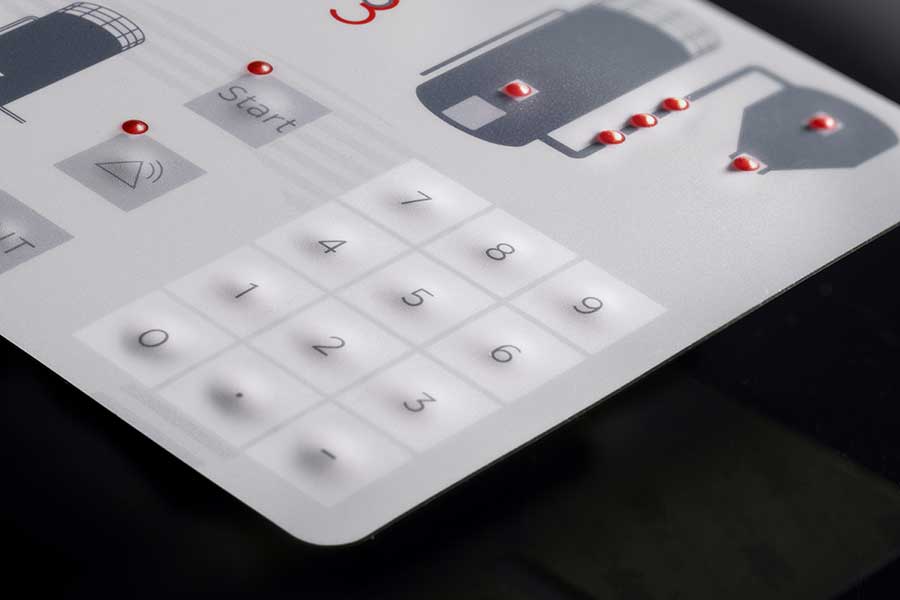Membrane Change Technology: The Key to Reliable and Economical Interfaces
Membrane button modern technology has actually emerged as an essential part in the design of interface, providing both dependability and cost-effectiveness across a varied series of applications. Its robust building and construction makes sure resistance to environmental challenges, while the adaptability in design enables customized remedies that meet particular market requirements. As we discover the complex advantages of membrane buttons, their possibility for innovation increases inquiries regarding future applications and advancing fads. What does the next chapter hold for this technology in a progressively digital landscape?
Comprehending Membrane Switch Over Modern Technology
Membrane button modern technology is a commonly used interface service in various digital gadgets, using a smooth blend of performance and style. This modern technology integrates multiple layers of products, typically consisting of a graphic overlay, spacer layer, and a circuit layer. The visuals overlay displays the interface components, while the spacer layer divides the circuit layer from the overlay till an individual triggers a button.
When stress is put on the overlay, the circuit layer finishes the electric circuit, sending out a signal to the gadget. This device permits numerous setups, consisting of tactile comments and backlighting choices, improving individual interaction. Membrane buttons are typically made making use of long lasting materials such as polyester or polycarbonate, guaranteeing long life and resistance to ecological factors like moisture and dirt.
The convenience of membrane changes enables their application in diverse industries, consisting of clinical devices, customer electronic devices, and industrial controls. Their portable layout enables for assimilation into space-constrained environments, supplying an efficient interface without compromising aesthetic allure. Comprehending the complexities of membrane layer button innovation is important for suppliers and developers seeking to develop reliable and reliable human-machine interfaces.
Trick Benefits of Membrane Switches
While numerous user interface remedies exist, membrane layer switches deal unique benefits that make them a preferred option in countless applications. Among the main advantages is their durability; membrane switches are created to hold up against harsh environmental problems, consisting of moisture, dirt, and temperature changes, ensuring resilient performance. This resilience substantially lowers the demand for constant replacements, thereby reducing general maintenance expenses.

In addition, membrane layer buttons are light-weight and compact, making them suitable for applications where space is restricted. Their inconspicuous style contributes to a sleek look without endangering capability.
Cost-effectiveness is additionally a significant advantage, as the manufacturing procedure for membrane layer switches often tends to be less costly contrasted to standard mechanical switches. This affordability, incorporated with their dependability and this contact form ease of installment, placements membrane switches as a functional service for a wide variety of markets looking for effective and effective user interfaces.
Applications Throughout Numerous Industries
Exactly how do membrane buttons adjust to the varied needs of numerous industries? Membrane layer switch technology is increasingly recognized for its adaptability, making it appropriate for a large range of applications across numerous industries. In the clinical field, membrane layer switches are made use of in diagnostic equipment and individual monitoring gadgets, where their sturdiness and ease of cleaning are essential for preserving health standards. The automobile sector employs these buttons in control panels and control panels, supplying a streamlined aesthetic while making certain user-friendly procedure.
In consumer electronic devices, membrane buttons supply a portable solution for push-button controls and home devices, boosting user experience through user-friendly layout. In addition, the industrial sector leverages membrane switches for machinery control panels, taking advantage of their resistance to rough settings, such as moisture and dust.
Army and aerospace applications also utilize membrane switches for their reliability and capability to stand up to severe problems, ensuring operational effectiveness in critical circumstances. The food and beverage industry takes on these switches for automated systems, where cleanliness and simplicity of operation are critical (membrane switch). Eventually, membrane switches are tailored to satisfy the special needs of each market, showing their vital duty in modern innovation interfaces
Layout and Personalization Alternatives

In the world of membrane layer switch innovation, design and modification options play a critical duty in improving functionality and individual communication. These switches can be customized to satisfy specific operational needs and visual choices, making them flexible components in numerous applications.
One of the key personalization options is the format of the switch itself, which can be made to suit distinct interface and ergonomic considerations. By adjusting the form, size, and plan of switches, producers can develop user-friendly designs that facilitate simplicity of use. Clicking Here Additionally, the unification of different shades and graphic overlays enables branding and enhanced presence, guaranteeing that customers can rapidly identify functions.
Furthermore, membrane layer switches can be crafted with various tactile responses devices, such as increased switches or distinct clicks, to boost the individual experience. Different products can also be chosen for resilience and ecological resistance, addressing aspects such as dampness, temperature Recommended Reading changes, and chemical direct exposure.
Ultimately, the substantial style and personalization options offered in membrane layer switch technology equip organizations to create tailored remedies that not only satisfy practical demands but likewise straighten with their branding and functional needs.

Future Fads in Membrane Buttons
As membrane layer button technology continues to progress, future fads are increasingly concentrated on improving customer experience and integrating sophisticated performances. One considerable pattern is the assimilation of touch-sensitive and capacitive modern technologies into conventional membrane switches. This advancement enables even more instinctive individual interfaces, providing tactile feedback while preserving a smooth style.
Another emerging fad is the usage of eco pleasant materials, driven by the expanding need for lasting manufacturing practices. Manufacturers are looking for to lower their carbon impact by using recyclable substratums and low-impact inks, straightening with international sustainability objectives.
In addition, the increase of the Internet of Points (IoT) is triggering the consolidation of smart attributes right into membrane switches. Boosted connection options will make it possible for tools to connect with each other, permitting seamless assimilation right into wider systems.
Additionally, innovations in printing innovations, such as digital printing, are permitting higher design adaptability and personalization. This enables suppliers to create intricate designs and vivid colors cost-effectively.

Verdict
To conclude, membrane layer switch modern technology represents an essential advancement in user interface layout, providing considerable advantages in resilience, modification, and cost-effectiveness. Its extensive applicability throughout diverse sectors underscores its value in contemporary innovation. As improvements continue to emerge, specifically in touch-sensitive interfaces and lasting products, the potential for membrane changes to enhance individual experience and capability remains appealing. Continued expedition of this technology will likely yield better improvements and widen its scope in future applications.